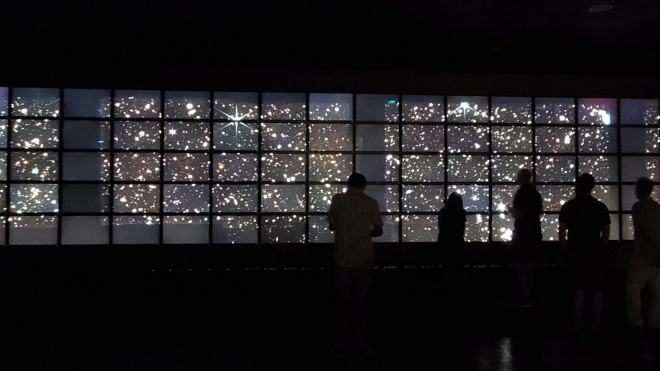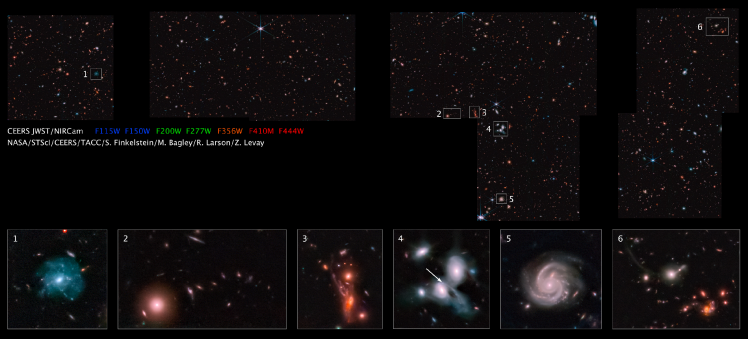A team of scientists has published a large-scale mosaic of images taken by NASAʼs James Webb Space Telescope.
This is reported by Space.com.
This image was produced by the Cosmic Evolution Early Release Science Survey (CEERS). The image is a mosaic of 690 individual frames taken by the NIRCam near-infrared camera.
The image shows distant galaxies whose light has changed from visible to infrared as they travel through time and space.
The researchers discovered an object in the image, which they named the Maisie galaxy after the daughter of project leader Steven Finkelstein. Maisie may be one of the oldest galaxies ever observed by humans. Estimated, it appeared less than 400 million years after the Big Bang.
Other cosmic wonders spotted by CEERS scientists include an arc of smaller galaxies near the bright galaxy, interacting spiral galaxies, a supernova and a group of red galaxies.
The images can be viewed on the CEERS project pages in medium and high resolution. The company recommends doing this on a computer or laptop, not on a phone, as the file is quite large (262 MB).
Scientists singled out six of the most interesting findings in this picture:
- A spiral galaxy with a redshift of z = 0.16. The resolution of the image shows a large number of blue clumps and star clusters.
- A random alignment of a bright galaxy at redshift z = 1.05 with several smaller galaxies forming an arc across the sky.
- An interacting galaxy system at z = 1.4, which the CEERS team has named the "Cosmic Kraken."
- Two interacting spiral galaxies at z = 0.7. The arrow points to a supernova detected by imaging.
- Another spiral galaxy, also at z = 0.7, again highlights the telescopeʼs ability to distinguish small features even in moderately distant galaxies.
- Random alignment of the az = 0.63 galaxy with a tail and clustering of red galaxies at z = 1.85.
- On December 25, 2021, NASA launched the $10 billion James Webb Space Telescope, which will replace the Hubble telescope. It was sent to a distance of 1.5 million kilometers from the Earth — to the point L2. Scientists have high hopes for "Webb" — it will help to look much deeper into the universe and study galaxies and planets in more detail.
- On December 29, 2021, NASA announced that the telescope will operate longer than expected. An analysis of the trajectory showed that its fuel reserve would be enough for more than 10 years of operation.

